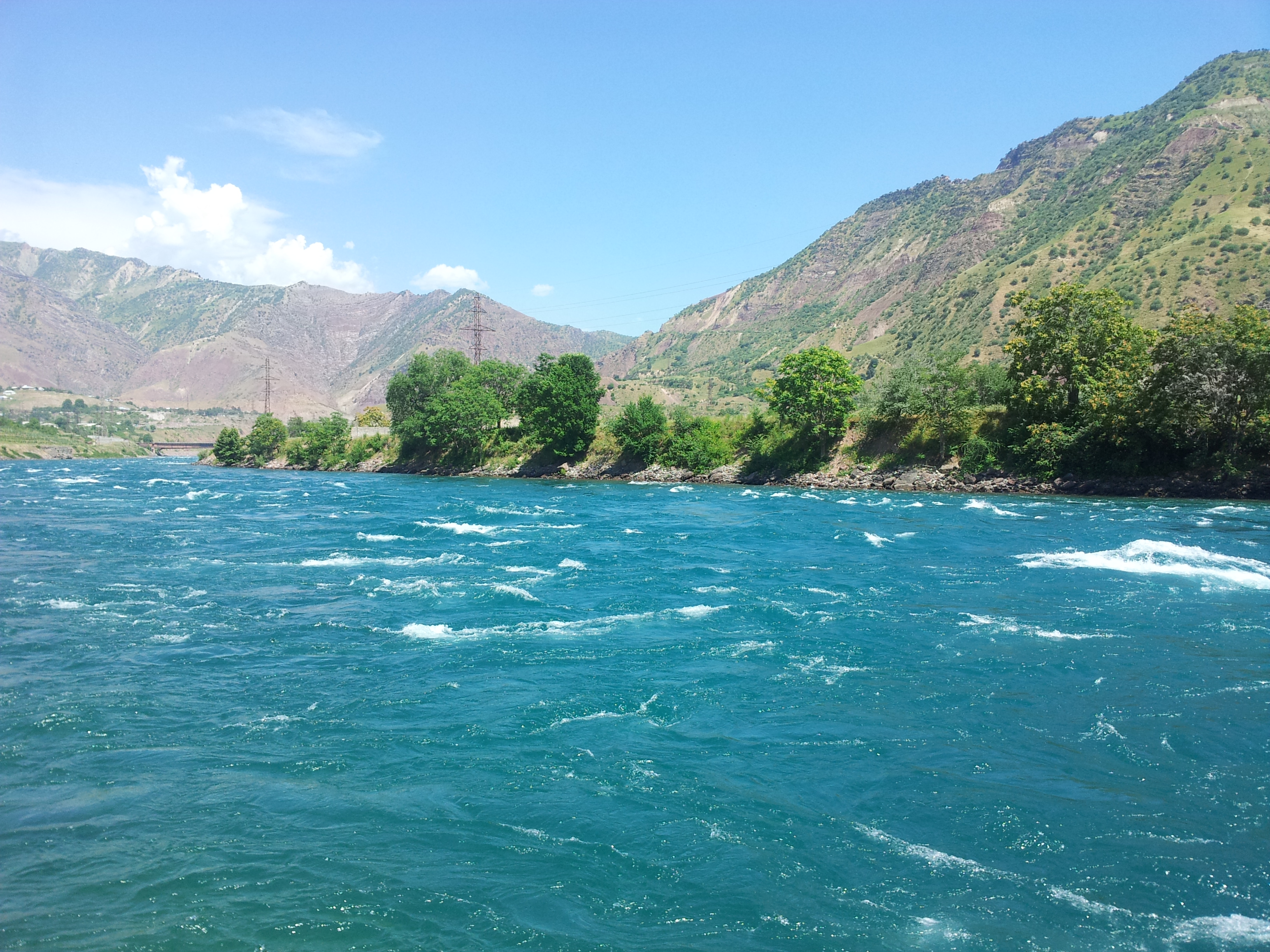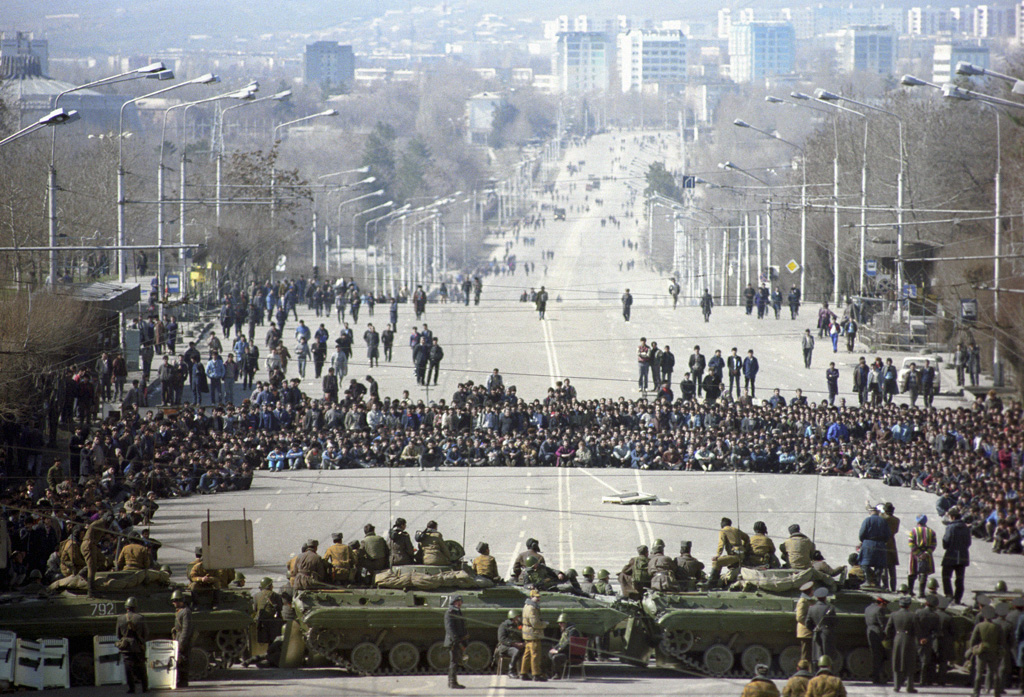|
Garm, Tajikistan
Gharm (, tr. Gharm; , tr. Garm; , tr. Gharm) is a city and jamoat in the Rasht Valley area of central Tajikistan. The population of the town is 9,800 (January 2020 estimate). From the 1920s until 1955 there was a Gharm Oblast in Tajikistan, which included the territory of the current Gharm Valley. Gharm is also the former name of the Rasht District in central Tajikistan. History During the 1920s Gharm was a hotbed for the Basmachi, the anti-Soviet resistance in Central Asia. In 1929 Basmachi commander Faizal Maksum crossed from Afghanistan into Tajikistan and briefly captured Gharm, only to later be expelled by Soviet forces. During the Civil War in Tajikistan from 1992 to 1997, Gharm was a hotbed for the opposition force, and the town was controlled by the opposition during the later part of the civil war in Tajikistan. In October 2010, the Tajik Interior Ministry An interior ministry (sometimes called a ministry of internal affairs or ministry of home affairs) is a ... [...More Info...] [...Related Items...] OR: [Wikipedia] [Google] [Baidu] |
Countries Of The World
The following is a list providing an overview of sovereign states around the world with information on their status and recognition of their sovereignty. The 206 listed states can be divided into three categories based on membership within the United Nations System: 193 member states of the United Nations, UN member states, 2 United Nations General Assembly observers#Present non-member observers, UN General Assembly non-member observer states, and 11 other states. The ''sovereignty dispute'' column indicates states having undisputed sovereignty (188 states, of which there are 187 UN member states and 1 UN General Assembly non-member observer state), states having disputed sovereignty (16 states, of which there are 6 UN member states, 1 UN General Assembly non-member observer state, and 9 de facto states), and states having a political status of the Cook Islands and Niue, special political status (2 states, both in associated state, free association with New Zealand). Compi ... [...More Info...] [...Related Items...] OR: [Wikipedia] [Google] [Baidu] |
Rasht Valley
The Rasht Valley (russian: Раштская долина; tg, Водии Рашт) is located in Tajikistan and composes a significant portion of the Region of Republican Subordination, including the six districts of Lakhsh, Rasht, Roghun, Tavildara, Tajikobod and Nurabad. Historically the Rasht Valley has been called Karotegin or Karategin. During the 1992-1997 Tajikistan Civil War, the region was a stronghold for forces opposed to the government of Emomalii Rahmon and became the site of numerous battles. Notably, four members of the United Nations Mission of Observers in Tajikistan were murdered in the Garm district in 1998. From the 1920s until 1955 the Rasht Valley was within the Gharm Oblast. History Karotegin is the historic name of the Rasht Valley and a historic political region in pre-Soviet Central Asia that is today part of Tajikistan. The Karotegin region was also named Garm, though Garm is also the name of a city and the Garmi ethnic group. Karotegin frequently ... [...More Info...] [...Related Items...] OR: [Wikipedia] [Google] [Baidu] |
Civil War In Tajikistan
The Tajikistani Civil War ( tg, Ҷанги шаҳрвандии Тоҷикистон, translit=Jangi shahrvandiyi Tojikiston / Çangi shahrvandiji Toçikiston; russian: Гражданская война в Таджикистане), also known as the Tajik Civil War, began in May 1992 when regional groups from the Garm and Gorno-Badakhshan regions of Tajikistan rose up against the newly formed government of President Rahmon Nabiyev, which was dominated by people from the Khujand and Kulob regions. The rebel groups were led by a combination of liberal democratic reformers and Islamists, who would later organize under the banner of the United Tajik Opposition. The government was supported by Russian military and border guards. The main zone of conflict was in the country's south, although disturbances occurred nationwide. The civil war was at its peak during its first year and continued for five years, devastating the country. An estimated 20,000 to 150,000 people were killed i ... [...More Info...] [...Related Items...] OR: [Wikipedia] [Google] [Baidu] |
Soviet Studies
''Europe-Asia Studies'' is an academic peer-reviewed journal published 10 times a year by Routledge on behalf of the Institute of Central and East European Studies, University of Glasgow, and continuing (since vol. 45, 1993) the journal ''Soviet Studies'' (vols. 1-44, 1949–1992), which was renamed after the dissolution of the Soviet Union. The journal focuses on political, economic and social affairs of the countries of the former Soviet bloc and their successors, as well as their history in the 20th century. Both Europe-Asia Studies and Soviet Studies are available online with subscription via JSTOR from 1949 onwards. According to the ''Journal Citation Reports'', the journal has a 2020 impact factor of 2.102, ranking it --- out of 161 journals in the category "Political Science". References External links''Europe-Asia Studies''@ JSTOR''Soviet Studies''@ JSTOR See also * Central Asian Survey * Problems of Post-Communism ''Problems of Post-Communism'' is a bimonthly peer-revi ... [...More Info...] [...Related Items...] OR: [Wikipedia] [Google] [Baidu] |
Journal Of Contemporary History
The ''Journal of Contemporary History'' is a quarterly peer-reviewed academic journal covering the study of history in all parts of the world since 1930. It was established in 1966 by Walter Laqueur and George L. Mosse. Originally published by Weidenfeld & Nicolson it was purchased by Sage Publications in 1972. The editors-in-chief are Richard J. Evans (University of Cambridge) and Mary C. Neuburger (University of Texas at Austin). Content and scope The journal publishes scholarly articles, review articles and book reviews, covering a broad range of historical approaches including social, economic, political, diplomatic, intellectual and cultural, on every country and region of the world within living memory, from 1930 to the present day. The journal also publishes special issues, arising from conferences or from an externally submitted proposal. Since 2008, the journal has included reviews of individual books, in addition to review articles covering a range of books within the c ... [...More Info...] [...Related Items...] OR: [Wikipedia] [Google] [Baidu] |
Faizal Maksum
Faizal Maksum was one of the leaders of an anti-Soviet group known as the Basmachi and led an organized resistance against the Soviet military occupation of Central Asia in the 1920s. Maksum was loyal to the ousted Emir of Bukhara and operated primarily on the border of the Soviet republic of Tajikistan and Afghanistan. In 1929 Faizal Maksum led a raid from Afghanistan into Tajikistan during the short reign of the Afghan Emir Habibullāh Kalakāni Habibullah Kalakani ( prs, , 19 January 1891 – 1 November 1929), also known by his nickname "Bacha-ye Saqao" (also romanized Bachai Sakao; literally ''son of the water carrier'') was the ruler of Afghanistan from 17 January to 13 October 192 .... In this raid his forces briefly captured the town of Garm in central Tajikistan, until Soviet forces supplied by air expelled Basmachi forces from the town. References Basmachi movement 20th-century Tajikistani people Afghan Civil War (1928–1929) {{CAsia-hist-stub ... [...More Info...] [...Related Items...] OR: [Wikipedia] [Google] [Baidu] |
Soviet Union
The Soviet Union,. officially the Union of Soviet Socialist Republics. (USSR),. was a transcontinental country that spanned much of Eurasia from 1922 to 1991. A flagship communist state, it was nominally a federal union of fifteen national republics; in practice, both its government and its economy were highly centralized until its final years. It was a one-party state governed by the Communist Party of the Soviet Union, with the city of Moscow serving as its capital as well as that of its largest and most populous republic: the Russian SFSR. Other major cities included Leningrad (Russian SFSR), Kiev (Ukrainian SSR), Minsk ( Byelorussian SSR), Tashkent (Uzbek SSR), Alma-Ata (Kazakh SSR), and Novosibirsk (Russian SFSR). It was the largest country in the world, covering over and spanning eleven time zones. The country's roots lay in the October Revolution of 1917, when the Bolsheviks, under the leadership of Vladimir Lenin, overthrew the Russian Provisional Government ... [...More Info...] [...Related Items...] OR: [Wikipedia] [Google] [Baidu] |
Gharm Oblast
The Gharm Oblast (russian: Гармская область; tg, Вилояти Ғарм, translit=Viloyati Ğarm/Vilojati Ƣarm; fa, ولایت غرم, ''Velâyate Qarm'') was an oblast in the Tajik Soviet Socialist Republic in the Soviet Union from the 1920s to 1955. Its capital was Gharm. The population of Gharm were known as Gharmis, a term still used in Tajikistan today. History In the 1920s, during the reorganization of borders in Central Asia, a Gharm oblast was created out of the old Qarategin and Darvaz, districts of the Emirate of Bukhara. The ''Gharm Oblast'' consisted of much of the Qarategin Valley, as well as the Kalai-Khumb District. During the 1920s Gharm was a hotbed for the Basmachi, the anti-Soviet resistance in Central Asia. In 1929 Basmachi commander Faizal Maksum crossed from Afghanistan into Tajikistan and briefly captured the city Gharm, only to later be expelled by Soviet forces. The 1939 Soviet Census record a population of 183,100 in the Gharm Oblas ... [...More Info...] [...Related Items...] OR: [Wikipedia] [Google] [Baidu] |
Jamoats Of Tajikistan
The jamoats of Tajikistan (russian: джамоаты, dzhamoaty; tg, ҷамоати деҳот, jamoati dehot, "village communes") are the third-level administrative divisions, similar to communes or municipalities, in the Central Asian country of Tajikistan. As of January 2020, there are 368 rural jamoats, 65 urban-type settlement, towns and 18 cities in Tajikistan. Each jamoat is further subdivided into villages (or ''deha'' or ''qyshqol'') The jamoats and towns, and their population figures (as of January 2015) by district of each region are listed below:Jamoat-level basic indicators United Nations Development Programme in Tajikistan, accessed 2 October 2020 Sughd Region Districts of Republican Subordination Khatlon Region ...[...More Info...] [...Related Items...] OR: [Wikipedia] [Google] [Baidu] |
Regions Of Tajikistan
Administratively, Tajikistan is divided into: * one autonomous region (russian: автономная область; tg, вилояти мухтор, ''viloyati mukhtor'') * two regions ( tg, вилоятҳо, ''viloyatho'' fa, ولایتها), sing. tg, вилоят, ''viloyat''و fa, ولایت, russian: область/вилоят ) * the Districts of Republican Subordination * the capital city, Dushanbe. {, class="wikitable sortable" !No.!!Name!!Russian!! Tajik!!ISO!!Capital!!Area {km2)!!Pop (2000)!!Pop (2010)!!Pop (2019) , - , 1, , Sughd Region, , ''Sogdijskaya oblast' '', , ''Viloyati Sughd'', , TJ-SU, , Khujand , align=25,400, , align=1,871,979, , align=2,233,550, , align=2,658,400 , - , 2, , Districts of Republican Subordination, , ''Rajoni respublikanskovo podchineniya'', , ''Nohiyahoi tobei jumhurī'', , - , , Dushanbe , align=28,600, , align=1,337,479, , align=1,722,908, , align=2,120,000 , - , 3, , Khatlon Region, , ''Khatlonskaya oblast, , ''Viloyati ... [...More Info...] [...Related Items...] OR: [Wikipedia] [Google] [Baidu] |



